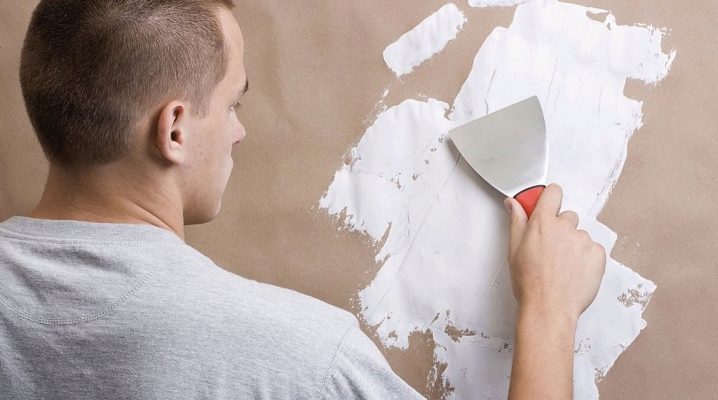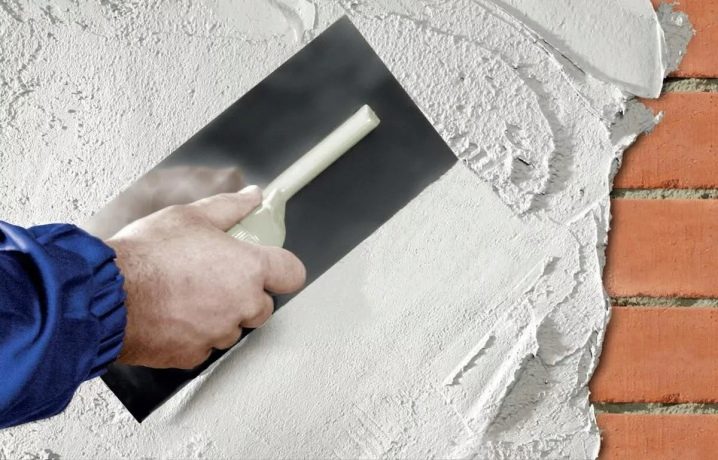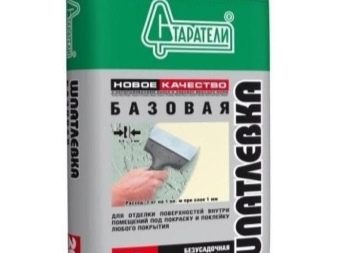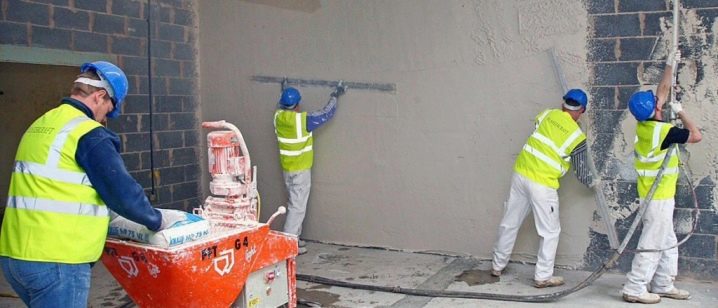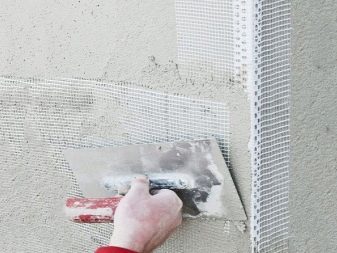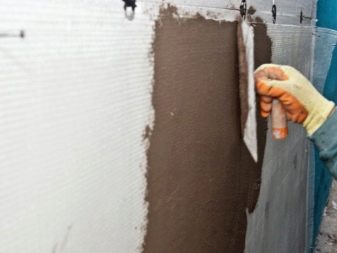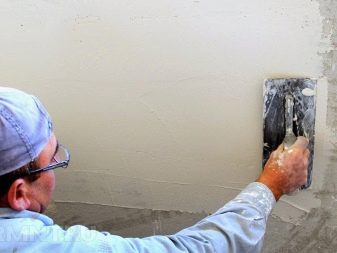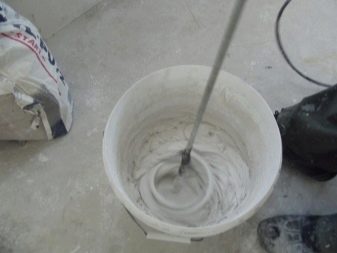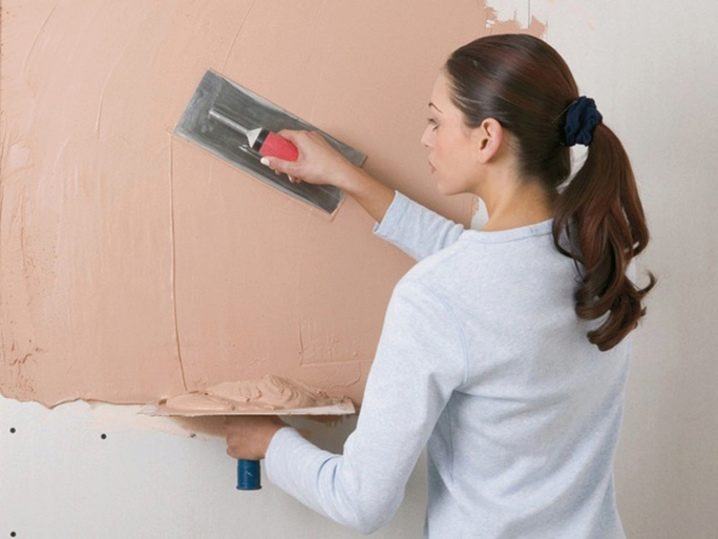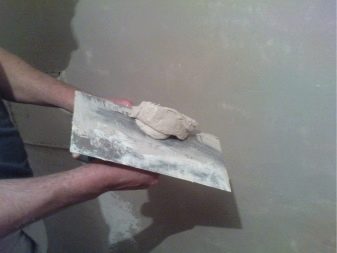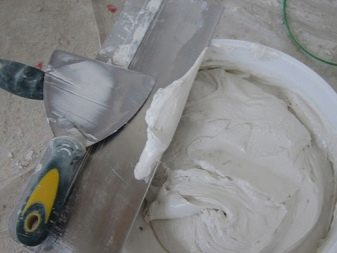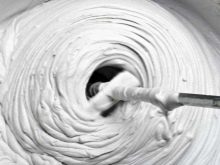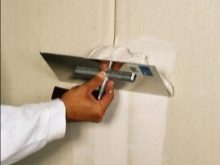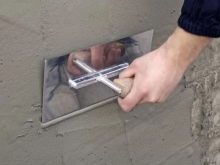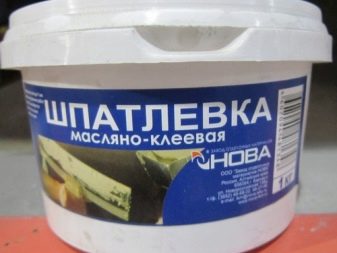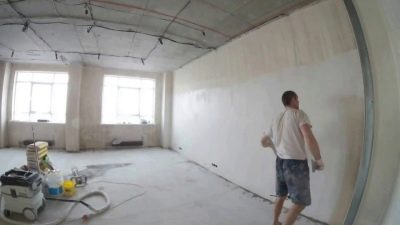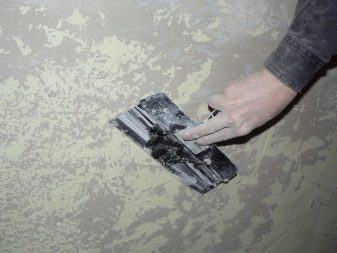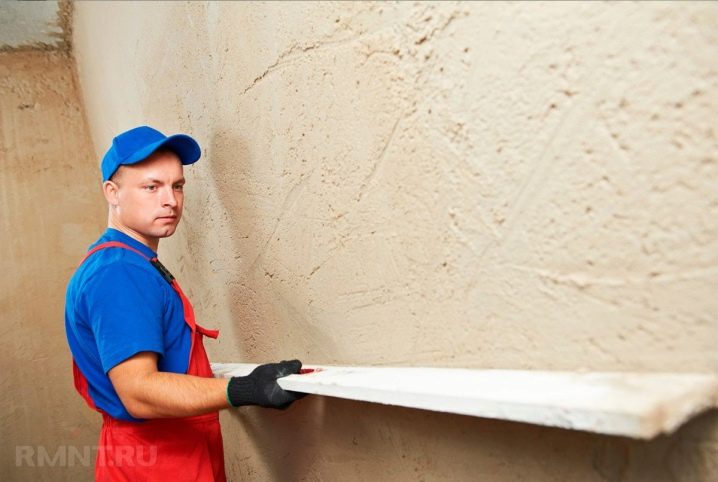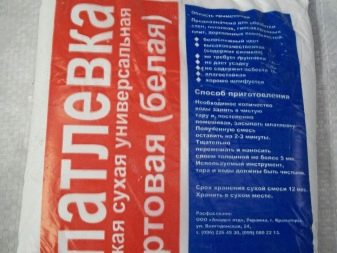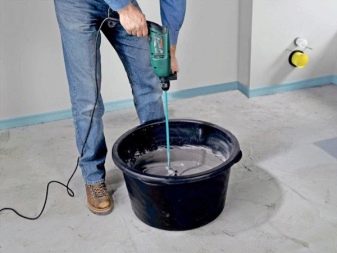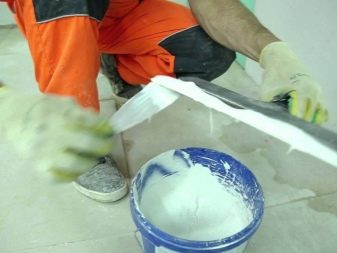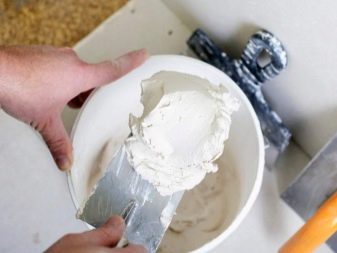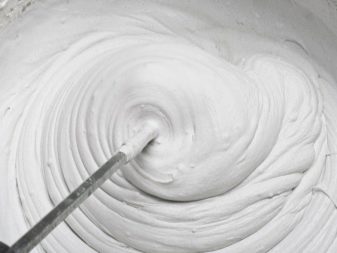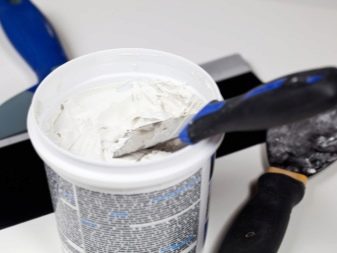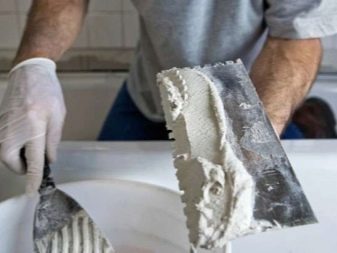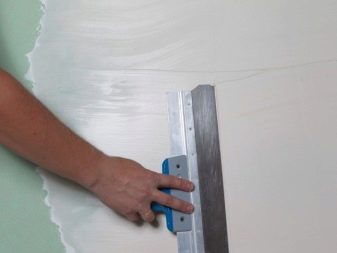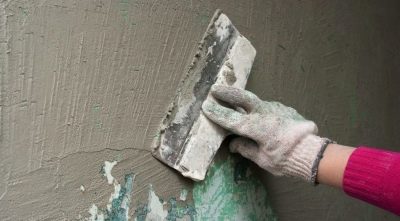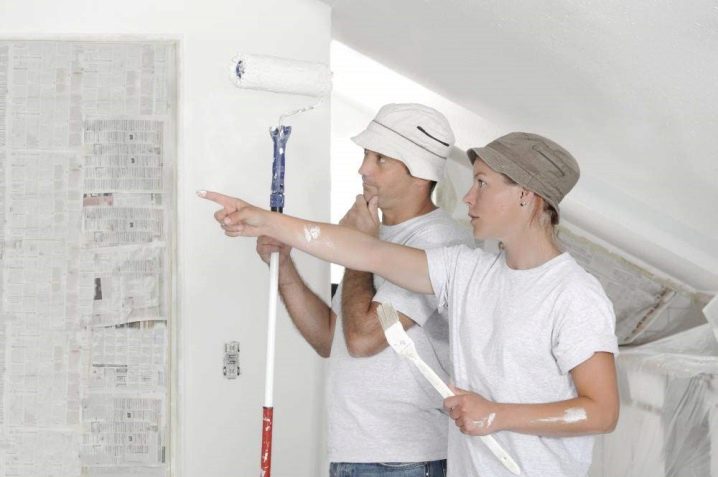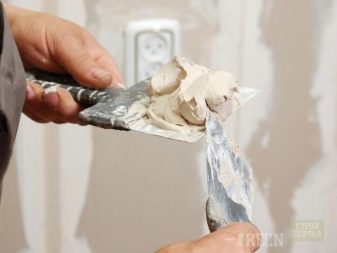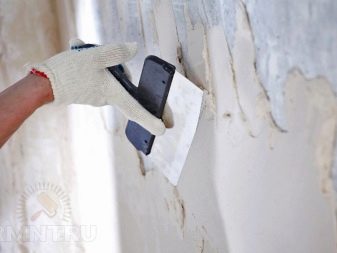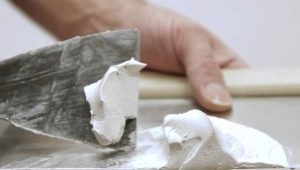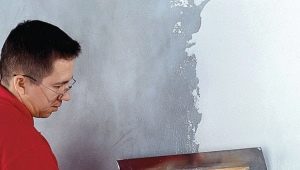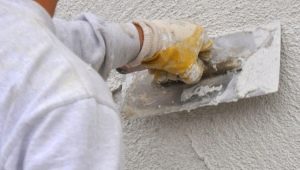Features of the starting putty
Modern stores have a very wide range of putty materials. The varieties and characteristics of putties are usually well understood only by those people who often have to independently engage in the implementation of repair and finishing works. However, if desired, even a beginner can navigate in this diversity. Especially often in the implementation of finishing works need starting putty. About her and will be discussed in this article.
Special features
In terms of their purpose and composition, starting putty materials for walls and other surfaces are a cross between plasters and finishing putties. The structure of the starters is larger than that of the other fillers, but smaller than that of plasters. Today, such products are offered by various manufacturers, but materials from well-known and trusted consumers of Knauf, Osnovit, Prospetels, have gained particular popularity.
When carrying out finishing it is worth using all materials from the same manufacturer.In this case, it increases the likelihood that you will end up with an aesthetic, durable and durable coating.
Purpose
All starting putties are designed to make certain bases more even. Such coatings are most often applied to:
- bases with potholes, chipped areas, cracked surfaces;
- ceilings and walls, on which plaster is applied;
- brick surfaces;
- bases that strongly deviate from the level;
- concrete floors.
In some cases, the base putty is applied on a glass mesh (reinforced layer). This is done in cases where the defects on the surface are very serious. If the substrate does not deviate very far from the level, it is usually necessary to apply several layers of putty material.
The expense at the same time turns out very considerable (if to compare to a method when the fiber glass mesh is used). Consumption is usually determined on 1 m2 of base: selecting the most suitable putty, you should focus on this indicator.
Starting putty materials also make smoother window slopes, fill the grooves. Selecting putty, consider the conditions in which it will be used. Remember that there are different materials for working outside and inside.
Species
There are different types of starter fillers. Such materials can be made independently, but it is necessary to follow the recommendations of specialists and take into account various important nuances. It is quite natural that the composition, created by hand, will be somewhat inferior in quality to products from well-known companies. In addition, the consumption of materials made independently, usually turns out to be very significant. For this reason, if possible, preference should be given to ready putty.
Created by yourself
If you still do not want to give your money for starting putty, try to create a suitable mixture with your own hands. We will understand the intricacies of cooking in more detail:
- Gypsum chalk putty are well suited to make surfaces of concrete and drywall in dry rooms more even. If you want to get such a putty, put gypsum (1/4) and chalk (3/4) in a dry container. They will need to mix gently.After that, place this mixture in a container, where there will be a solution of the adhesive composition (carpentry / animal) - it should be 5%. Stir the material thoroughly to obtain a homogeneous mass, and apply it immediately, because such a coating hardens in the shortest possible time.
- Oily The compositions are very well suited for bases made of wood, which are used in conditions of significant temperature differences (external walls, frames of wood windows). You should combine chalk (2 kg) and linseed oil (1 kg), then attach a desiccant to them (100 g will be enough) and boil the resulting solution. After that, it will be necessary to cool the material and apply it warm.
Ready made
You can not spend time on the preparation of putty on their own, and buy finished products. Varieties of such coatings:
- Polymer. The color of these fillers is white. It is very convenient to use them, they do not shrink, differ in durability and elasticity. However, not all consumers are satisfied with the price of polymeric materials - many believe that it is too high.
- Gypsum. They are great for use in rooms that are dry and well heated. Such materials are most often applied to walls, ceiling surfaces.They do not differ in moisture resistance, but at the same time do not shrink, are elastic and quickly dry.
- Cement. They can be used in rooms where the humidity is quite high. They are great for facade walls, openings for doors and windows. It should be borne in mind that during drying, such putty can shrink. The color of such coatings is gray.
On the surface of wood, metal and other materials can be applied and other ready putty. The following options are possible:
- glue spackling materials;
- epoxy compounds;
- oil coatings.
How to prepare the surface?
If you are going to apply putty material, take care to carefully prepare the base. Remove dirt and dust from it. Peel off coverings that crumble and stay loose. The tools with which you will do this can be anything. The main thing - the maximum convenience of all devices for use.
If you want to coat the base with a fresh coat of plaster, simply remove the dust from it using a wet sponge. You can walk on the surface with a vacuum cleaner.
If the base is old, you will need to clean it with paint or wallpaper. Do this with a sander; if the case is not very complicated, a spatula and a metal brush will do.
To get rid of oil or grease, treat the surface with any organic solvent. You can use regular gasoline or acetone.
On a clean base will need to be applied primer. By performing this procedure, you will improve the adhesion between the putty and the surface. Choose a primer based on where you work - indoors or outdoors.
It should be remembered that the filler should be suitable for the primer. If this is not taken into account, it is possible that the components of the materials will not be combined with each other. As a result, the coating will crack, peel off from the surface, and will have to carry out finishing work anew. To find out whether certain formulations conflict with each other, read the instructions and information on the packaging.
How to cook the material?
Polymeric materials are usually sold ready to use. They are delivered to the market in tightly closed containers.It should be borne in mind that such materials are only conditionally ready for use.
If the putty materials are stored in warehouses for quite a long time, the fillers in them inevitably stratify. Components that are more significant weight, are at the bottom of the tank, while others rise to the top. To restore the technical qualities of putty, take a nozzle-mixer, a drill and mix the material thoroughly.
Always take into account the consumption of the coating, pre-calculate exactly how much putty required.
Mixtures based on cement and gypsum are usually made dry. To prepare the filler material to work, add water to it. The proportions recommended by the manufacturer are usually indicated on the packaging.
Fluid temperature should be room temperature. First, put water in the container, and then add dry putty. Using a nozzle, you should mix the material thoroughly. Then some time will need to wait (from five to fifteen minutes): each component of the solution should eventually be soaked with liquid. After confirming this, take the mixer again and mix the material thoroughly.
It should be borne in mind that in preparing the putty material, polymer and gypsum mixtures can solidify very quickly. For this reason, it is not recommended to prepare too much putty. You still throw away the extra material, because to use the composition, which is already frozen, it will not be possible.
Drawing
For the application of the starting putty should use spatulas. Prepare narrow and wide tools. If the surface is quite large, it will be possible to take a device up to 600 mm wide.
Using a narrow tool, scoop the material from the bucket and spread it over a wide spatula. After that apply a covering on the basis. Smears should be smooth, wide.
The layer of starting filler composition can be quite thick (from 10 to 15 mm). This advantage of such material is very important, because with its help it is possible to eliminate quite strong surface defects. If you want the coating to be even thicker, make more layers (usually 2 or 3 is enough). Remember that Before applying the next layer, you must wait until the previous one is completely dry.
When the putty is distributed over the entire base, wait a while: it should become hard. After that, take the sandpaper and carefully polish the surface.
So the basis will be as much as possible smooth, equal, the structure of a covering becomes more thin. On the surface there will be no minor flaws: traces of various devices, sagging and other defects.
To make the foundation perfect, you need not only to be able to navigate in the varieties of starting putty compounds, but also to use such materials correctly, given even the seemingly insignificant nuances. In this case, the results of work are unlikely to disappoint you.
Consider the recommendations of experts, do not ignore the thorough preparation of the base. When the surface becomes as smooth as possible, it will be possible to proceed with the application of a finishing material.
For information on how to apply starting putty on concrete, see the following video.
